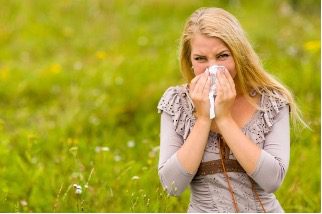How Does Insulation Keep Allergens Out of Your Home?

When it comes to creating a healthy and comfortable living space, one of the unsung heroes in your home might be your insulation. While we typically think of insulation as a tool for regulating temperature and saving energy, it also plays a crucial role in keeping allergens out. Here’s how insulation helps prevent allergens from infiltrating your home and improves your indoor air quality.
1. Creating a Barrier Against Outdoor Allergens
Insulation acts as a barrier between your indoor environment and the outside world. During allergy season, outdoor allergens such as pollen, dust, and pollution can easily enter your home through cracks, gaps, and poorly insulated areas. However, high-quality insulation in walls, attics, and floors helps reduce the amount of these airborne particles from infiltrating your home. By sealing up these gaps, insulation can prevent allergens from entering and keep your indoor air clean.
2. Regulating Temperature and Humidity
Fluctuating temperatures and humidity levels can lead to increased moisture buildup in certain parts of your home, such as your attic or crawl space. This excess moisture can promote the growth of mold, mildew, and dust mites—common allergens that can trigger respiratory issues. Insulation helps maintain a more consistent temperature and humidity level, preventing moisture from building up and reducing the chances of mold or dust mite infestations.
3. Reducing Air Leaks and Drafts
Many homes have drafts or air leaks around windows, doors, and other openings. These leaks not only lead to energy loss but also allow allergens to seep inside. Insulating these areas properly helps create a tight seal, preventing allergens from entering your home. By reducing air leaks, insulation also helps maintain better air quality by keeping allergens out and ensuring clean air circulates throughout your home.
4. Filtering Indoor Air
Some insulation materials, such as fiberglass, can also help trap particles in the air. While insulation is primarily designed to keep your home warm in the winter and cool in the summer, certain types of insulation can also act as a filter by capturing airborne dust and allergens. This adds an extra layer of protection, ensuring that the air in your home remains clean and healthy.
5. Preventing Pest Infestations
Insulation doesn’t just protect against allergens from outside; it also acts as a deterrent to pests like rodents, insects, and other critters that may introduce allergens such as pet dander, urine, or feces into your home. Proper insulation, especially in attics and crawl spaces, can help seal entry points where pests might try to enter, minimizing the risk of indoor allergens caused by these invaders.
6. Improving Overall Air Quality
By contributing to temperature regulation, reducing moisture, preventing drafts, and keeping allergens out, insulation directly impacts the air quality in your home. This is especially important for individuals with respiratory conditions such as asthma or allergies. Insulation helps maintain a cleaner environment by limiting the sources of allergens, which can lead to fewer symptoms and an overall improvement in your health.
Conclusion
While insulation is often associated with energy savings and temperature control, its role in maintaining a healthy home environment cannot be overlooked. By reducing allergens in the air, regulating moisture, and preventing the entry of outdoor pollutants, insulation is a key factor in improving your indoor air quality. If you’re ready to enjoy the benefits of cleaner air and a healthier home, upgrading your insulation can be a simple yet highly effective solution. Reach out to Koala Insulation of Baltimore at (667) 241-9099 to learn how we can help you achieve better air quality and comfort with top-quality insulation solutions!
Find Your Location


Get a quote


